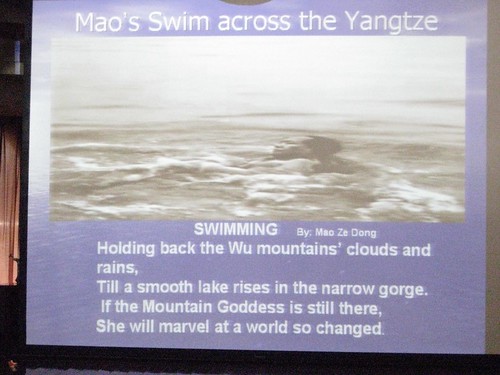
This was one of the two subjects which have generated the most defensiveness among the people we’ve talked with – the other being the one child policy. In both cases, they’ve been extraordinary frank – but plainly have talking points to cover.
The cost is roughly $25 billion to date – reportedly half to compensate and resettle the over 1.4 million people who were displaced from 13 cities, 140 towns, 1352 villages, and 657 factories. It started in 1992 and will be completed, in most part, this year. The ship elevator is still under construction,; now traffic moves through 5 ship locks
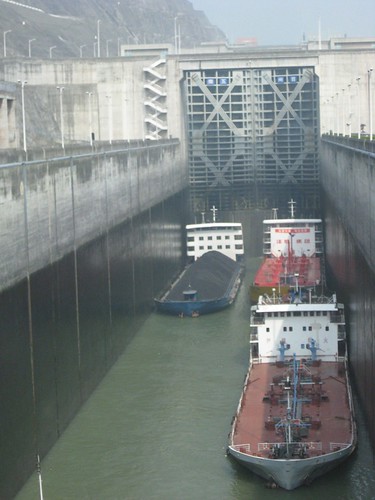
The positives: flood control, purportedly reducing flooding by 90%; 84 million annual kw/hours of hydroelectric power initially projected to cover 15% of China’s needs and replace 50M tons of coal; and more than tripling navigation to 10,000 ships.
The negatives? Enormous environmental and cultural impacts. 1.4 million people have lost their homes, hundreds of ancient temples and cultural sites are now underwater, and at least three species are threatened with extinction. The glory of the gorges –while still astounding – is diminished. And, were the dam to fail, millions of people would die- and the dam is in an area of earthquakes and landslides. And it’s just heartbreaking to see all the signs of where the water level will be.
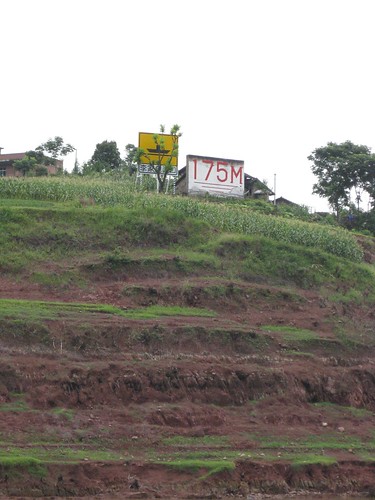
We talked to one man who said his village had been displaced. He, his brother, and his father – like 10,000 other displaced locals -- were all hired to work on the dam, as part of the landscaping crew.
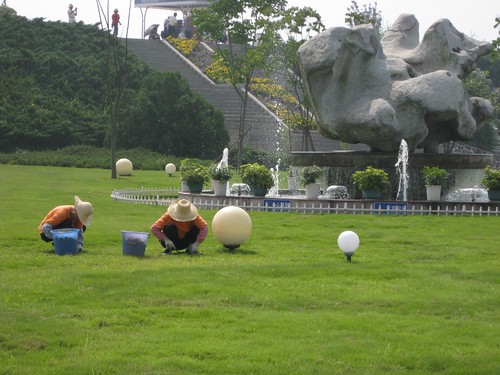
He says that he learned English drinking beer with the American, English, and Australian foreign dam workers. As a result, he reports, he was the only one of the 10,000 blue collar workers to be promoted to white collar. The blue collar workers live on the left bank of the river in dorms with no ac; the white collar workers, in nicer dorms with AC on the right bank.
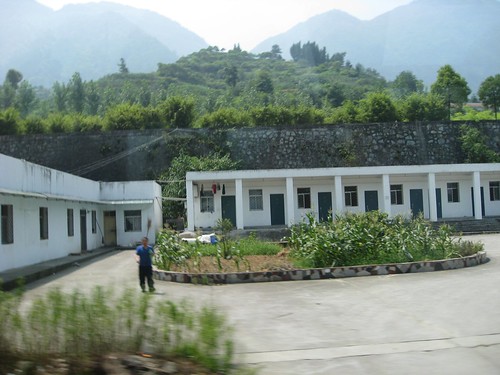
He says that every night his father, who plants trees, walks across the river to stay in his room.
Was there a choice? Probably. China could have built a series of smaller dams that might have generated as much power with fewer population and environmental impacts. Indeed, that’s the next step – given power demands, the government is now planning several more dams further upstream, nearer to Nepal and the headwaters.
No comments:
Post a Comment